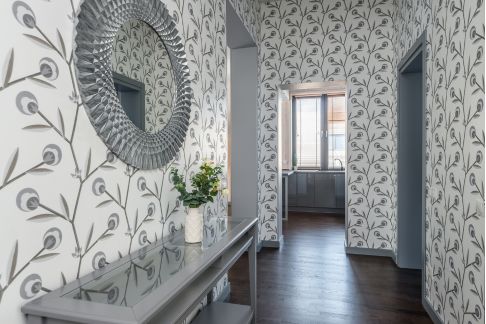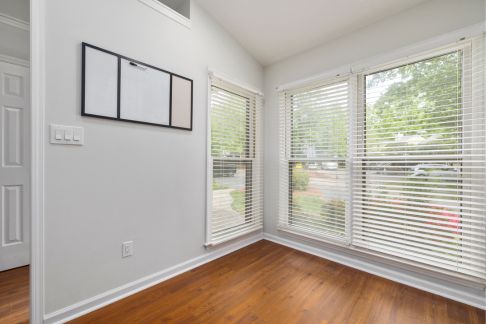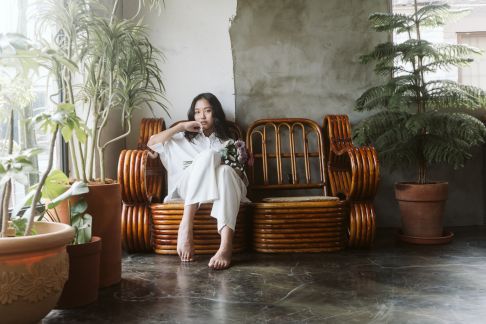In the world of design, trends have a funny way of coming back.
What was once seen as “too traditional” or “outdated” is now a designer’s secret weapon to create warm, character-filled homes. In India, we’re seeing a revival of classic decor styles that defined our parents’ and grandparents’ spaces only now, they’re styled with a fresh, modern twist.
From the brass curtain rods of our old living rooms to the delicate embroidery that once adorned every table linen, these elements are finding their way back into today’s interiors. And it’s not just nostalgia these pieces add depth, cultural richness, and a sense of familiarity to contemporary homes.
Here are three old-school Indian home decor trends making a big comeback in 2025, along with styling ideas to make them work in your space.
1. Ornate Curtains and Classic Drapery Rods
In traditional Indian homes, curtains were never just functional they were a statement of style. Heavy cottons, silks, or brocades in rich colours framed windows, often paired with beautifully carved wooden rods or polished brass poles topped with ornamental finials. Over time, minimal blinds and plain rods took over for a sleeker look, but the tide is turning.

Why it’s back: Designers are embracing the drama and personality that ornate curtains bring to a room. They instantly add texture, colour, and a sense of grandeur.
How to style today:
- Pair lightweight sheers with traditional floral or paisley block-printed drapes for a balanced look.
- Opt for rods in antique brass, carved teak, or wrought iron for vintage charm.
- Layer different fabrics — a sheer panel for soft light during the day and heavier drapes for privacy at night.
Pro Tip: In heritage-style homes, a double-rod setup can create a luxurious layered effect.
2. Wallpaper Borders for Subtle Drama
In the 80s and 90s, many Indian households embraced decorative wallpaper borders — strips of patterned paper running along the top or middle of a wall. They offered an easy way to add colour and design without committing to an entire wall of wallpaper. By the early 2000s, they disappeared from trend lists, replaced by plain paint or full-wall papering.
Why it’s back: With the rise of maximalist and nostalgic interiors, borders are returning as a low-commitment design feature that’s affordable and easy to install.
How to style today:
- Choose borders with traditional Indian motifs — think Rajasthani block prints, Mughal florals, or jaali-inspired patterns.
- Use them to frame a pooja corner, a kid’s playroom, or the backsplash area in the kitchen.
- Combine borders with neutral wall paint for a balanced look.
Pro Tip: Self-adhesive wallpaper borders are now widely available online, making them a perfect DIY weekend project.
3. Scalloped and Embroidered Details
If your nani’s or dadi’s house had embroidered pillow covers, crocheted table runners, or frilled edges on curtains, you know exactly the kind of old-world charm this trend brings. Scalloped hems and delicate embroidery are once again appearing in high-end decor collections, blending nostalgia with artisanal craftsmanship.
Why it’s back: The growing popularity of cottagecore and handmade Indian textiles has made embroidered and scalloped details feel both timeless and stylish. They bring warmth, artistry, and a sense of heritage to a space.
How to style today:
- Mix heirloom embroidered linens with modern dining table setups for a contrast of old and new.
- Use scalloped cushion covers in pastel or earthy tones to soften a modern sofa.
- Look for hand-embroidered wall hangings or throws from local artisans to support traditional crafts.
Pro Tip: Layering these pieces with solid modern furniture keeps the look sophisticated instead of overly frilly.
Final Word:
These trends are proof that design is a cycle — what was once considered “old-fashioned” can be reinvented into something current and chic. By embracing ornate curtains, wallpaper borders, and embroidered details, you’re not just following a trend — you’re preserving the artistry, craftsmanship, and cultural richness of Indian homes.
So the next time you visit your grandparents’ house, look around carefully. You might just find your next style inspiration sitting quietly in the living room.





